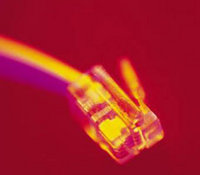The State of Car Telematics and Wireless M2M in the Auto Industry
LYON, France--At the beginning of 2006 about 219 million passenger cars were registered in the EU23+2 area. The ultimate goal for the car telematics industry is to connect all these vehicles to mobile networks. Even though there are numerous potential applications for car telematics technology, only very few have so far proven commercially viable on the European market.
eCall and driver assistance applications deliver value in the form of improved safety and better convenience when travelling. Stolen vehicle tracking and recovery facilitates recovery of the car in case of theft and frequently entitles the owner to insurance benefits. PAYD (payas-you-drive) insurance enables a completely new vehicle insurance model with individual premiums based on driving behaviour. Possible applications that have not yet reached commercial maturity include remote diagnostics and maintenance, connected navigation and online entertainment. Electronic toll collection based on GSM/GPS tracking has so far only been introduced for commercial vehicles. In the longer term similar technology may also be deployed for vehicle taxation.
Europe is currently trailing behind North America in the adoption of car telematics technology. After the initial setbacks, the market is now rebounding thanks to offerings which are more focused on creating customer value than integrating new technology. Progress is made simultaneously at a national as well as at a European level. Motor insurance providers have been crucial for the relative success on the Italian market and also play important roles in other countries. The recent debate around eCall has raised the awareness of telematics within the automotive industry as well as among stakeholders and will at the very least end in some sort of compromise consensus for how it should become possible to deliver a pan-European automatic emergency call service on a voluntary basis. Still the most likely outcome of the eCall process is that automatic emergency call capabilities will become a standard feature on all new cars in Europe in the early 2010s and pave the way for more advanced services later in the decade.
After a slow start, sales of OEM car telematics systems are beginning to gain momentum. Availability however remains limited to a handful of brands and sales volumes are still low, particularly in comparison with the North American market where OnStar is highly successful.
At the end of 2006, OEM car telematics solutions were offered in Europe by BMW, Fiat, Jaguar and Land Rover, PSA Peugeot Citroën and Volvo Cars. PSA Peugeot Citroën had the largest installed active customer base of 320,000 users, followed by BMW with approximately 100,000 active users. The other OEMs had attracted significantly less customers. Jaguar and Land Rover offer the broadest geographical coverage, extending to 36 European countries, compared to only 3 for BMW. When it comes to service availability, BMW and Fiat have the broadest portfolios, while PSA Peugeot Citroën, Jaguar, Land Rover and Volvo focus exclusively on safety and security.
The aftermarket telematics service providers are primarily focusing on motor insurance related products. Octo Telematics (MetaSystem), Viasat and Nexo (Cobra AT), all companies of Italian origin, have attracted more than half a million users of telematics solutions that entitle to insurance premium rebates. Stolen vehicle tracking and recovery remains the foremost application, but Octo Telematics is also offering PAYD insurance in partnership with several major market players. Other markets with high level of activity include the UK and Benelux. Norwich Union, the largest motor insurer in the UK, launched a full commercial PAYD insurance product for consumers in October 2006. Similar, though less sophisticated, products are also available from other motor insurance providers in the UK and Ireland



